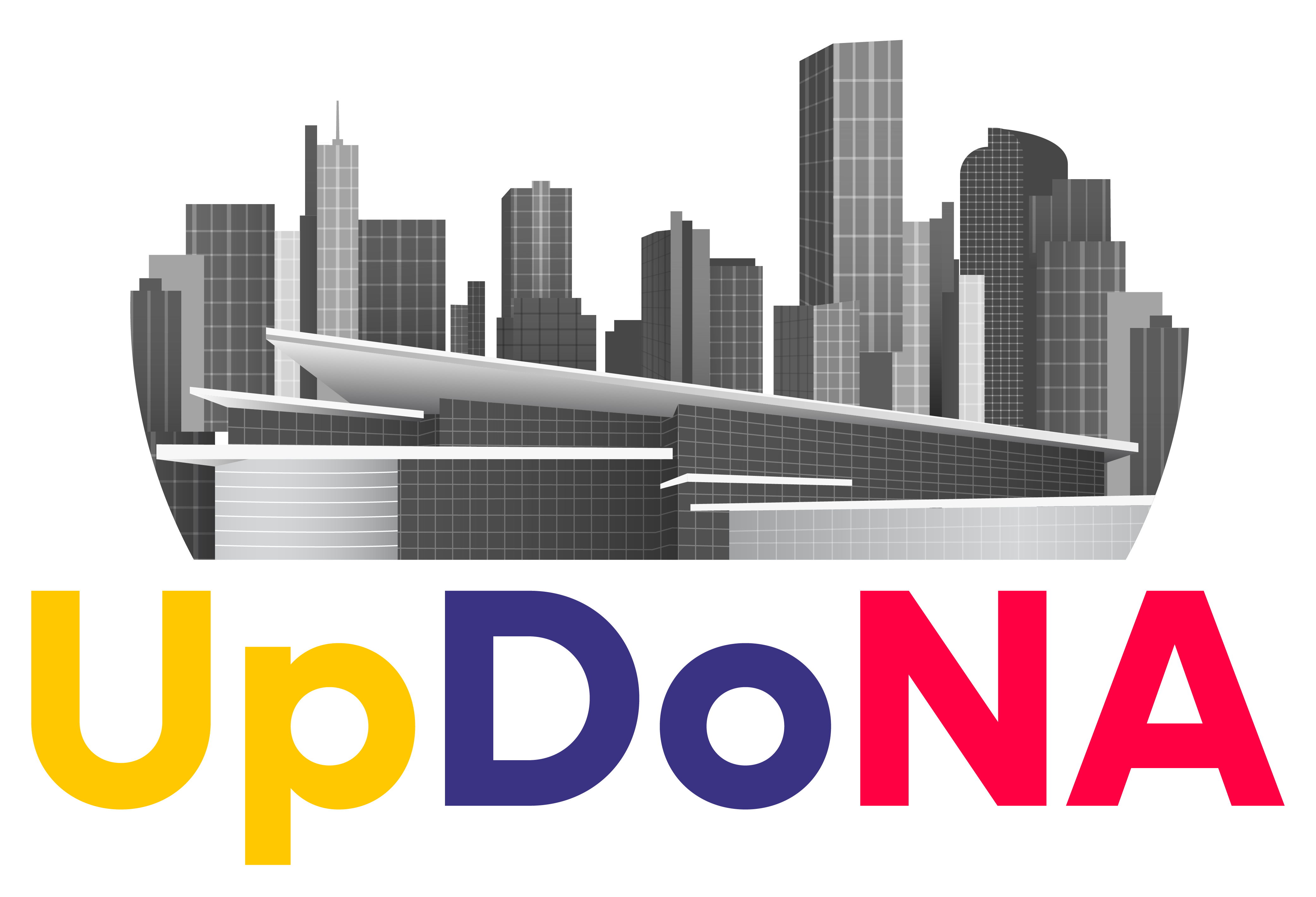Note from the board: The views and opinions in this article are those of the author, and do not necessarily reflect the views and opinions of the UpDoNA board or its members.
Which approach to alleviating the problem of homelessness across Denver is more effective: a “housing first” or “shelter first” strategy? A housing first strategy aims to address homelessness by providing the homeless permanent housing, whereas a shelter first strategy aims to improve the material conditions of temporary shelters such as camping sites. This article first serves to introduce readers to how Denver, like other cities in the U.S., has approached the problem of chronic homelessness. This article secondly serves to inform how Central Business District residents – especially those associated with the Upper Downtown Neighborhood Association (UpDoNa) – can do more to increase data transparency around homelessness studies. Finally, I will explore the primary motivation of this article: to help readers compare and contrast the effectiveness of shelter-first versus housing-first homelessness programs.
Part I. Some History
In 2019, Denver residents voted to keep enforcing Denver’s urban camping ban. The urban camping ban is a policy that strictly forbids unsanctioned camping sites. That ban had its genesis in 2012 when the Occupy Wallstreet Movement took on its own form in the Occupy Denver Movement. Both of these movements were general protests against banking practices that left American households destitute and financially unstable. Proponents of the ban included the Denver City Council, Mayor Hancock, and the Downtown Denver Partnership (DDP), all of whom were fighting to prevent Occupy Denver protestors from disrupting commercial activity in the Denver metro.
The protestors of the Occupy Denver movement constructed several unsanctioned camps, which served as their staging areas. The camps had to be cleared away by the police to control the situation, which ironically resulted in an overall ban against homeless camps. Opponents of the urban camping ban focused on the unintended consequences that the ban would have on homeless individuals that relied on encampments. The same opponents tried to convince voters in 2019 that DOTI (Denver Department of Transportation and Infrastructure), the government body who is responsible for keeping the streets of Denver clear by enforcing the ban, is not addressing the root-causes of unsheltered homelessness, thus leaving homeless people at risk. Their efforts failed: the district court ruled the ban constitutional, and the Colorado State Supreme Court has refused to hear any more cases until more circuit courts hear the case.
The enforcement of the urban camping ban has become more versatile over the years. In 2016, there was a ~500% increase in “sweeps”, with a slight hold-off in 2019 when the ban was discussed in the district court, and a slight hold-off in spring 2020 when COVID-19 broke-out.1 Since then, the mayoral-led DOTI and the Denver Department for Public Health and the Environment (DDPHE) oversaw a slew of homeless encampment “sweeps”. Yet, questions began to emerge over who was ultimately responsible for the effectiveness of these sweeps. A local nonprofit – From Allies to Abolitionists – reported that of 12,000 contacts made between the Denver Police Department (DPD) and unsheltered homeless, only 4% of these contacts were connected to social workers and housing services who are tasked with improving mental-health, housing/shelter, and employment services for homeless individuals 2. Homeless advocates used more sensitive language to describe sweeps: “cyclical relocation” or “traumatic displacements”, carried out primarily by police officers. Those advocates who staunchly opposed the “sweeps” hoped that homelessness advocacy might take off once the operating costs of conducting these sweeps were revealed to the public.
Part II. Where are the Data?
The ‘From Allies to Abolitionists’ sweep-cost-study in 2020 found that a single sweep could cost around $30K, and around 30 of these happened in 2019 alone – the only year since 2012 where there was a slight pause in enforcement. 3. These studies attempted to garner public action against DOTI by directing public attention to hard-to-access data collection efforts: DOTI data around homeless sweeps are not available to the public in raw form. Moreover, nonprofit databases that track unsheltered homeless also appear to be not easily accessible for the public. The Metro Denver Homelessness Initiative (MDHI) supposedly curates Point-In-Time estimates of homeless demographics, but their website’s dashboard’s underlying data are not available for download. The Colorado Coalition for the Homeless also curates annual reports of aggregated Point-In-Time estimates, but the raw data again are not available for download. Note that these data are federally mandated to be collected and compiled into annual reports, but are so aggregated that they are difficult to incorporate into any meaningful statistical analysis by your average concerned citizen.
Part III. Housing or Shelter First?
Action has been taken to increase transparency around homeless encampment sweeps and demographics of the homeless. The opportunity cost of a sweep is the per capita price of subsidized housing or shelter to the unsheltered homeless. This approach garners its support from the Denver Department of Housing Stability (HOST), which entered into this fray in 2020 when Denver voters approved a $40.9 million homelessness resolution fund (HRF), which aims to endow any effort to alleviate homelessness for the foreseeable future instead of paying nearly $1 million in sweeps every year 4. The HRF will take nearly 10 years of tax collections to accrue this $40.9 million amount 5, during which organizations like the Colorado Coalition for the Homeless will provide applicants with shelter and vouchers for preexisting apartments at centers such as St. Francis.
Let’s first consider the headway made by the “shelter first” approach. Of the $40.9 million allocated to both shelters and housing, nearly $10 million is earmarked for shelters. Of that $10 million, $1 million has been distributed to nonprofits like the Salvation Army or the Colorado Village Collaborative (CVC). For example, the CVC provides equipment, tents, and sanitation services to name a few to sanctioned camp sites. In 2022, the CVC received a ~$900k contract in addition to their initial $120k contract, to operate a portion of the new Safe Outdoor Space (SOS) sites which has resulted in the sheltering of some 120 households. CVC has been so successful that in February 2022 the Denver City Council approved an additional $3.9 million from federal COVID relief funds to expanding SOS operations 6.
Sites that don’t fall under SOS are considered “illegal sites” and are engaged by the Strategic Outreach to Large Encampments (SOLE). SOLE with the help of a mix of government programs and non-profits provide assistance to unsanctioned sites. These non-profits include WRAP (Western Regional Advocacy Project) and Denver Homeless Out Loud. Government efforts, which are not focused on social work, include STAR (Support Team Assisted Response) and the creation of “Area Restrictions”, which are overseen by some eighteen urban park rangers and a “street enforcement team” composed of civilians. The latter force was created in September 2021 and as of March 2022 has carte-blanche in ticketing unsanctioned camp residents.
Now let’s consider “housing first” approaches. One such effort in fall 2021 led by the Denver Housing First Collaborative (DRC) in conjunction with MDHI, the Denver Housing Authority, Homebase, and Community Solutions moved 340 households into housing from 2020-present. The effort was funded from the HRF, which is funded in part by HUD (the federal Housing and Urban Development Department). This effort was so successful that a second phase was rolled out in February 2022 to extend the number of relocations up to 400 households 7.
In a separate effort, Denver started a five-year social impact bond project in 2016, with the aim of permanently housing the homeless 8. These bonds do not create new housing but rather house participants at pre-existing housing projects via a voucher. The applicants are connected to health-care providers, employment support, substance abuse support, and transportation voucher programs. The program was immensely popular, with a saturated application pool: of 250 applicants, only one applicant initially dropped out 9. The Urban Institute, a non-profit that studies the
efficacy of the social impact bond project, has found that 86% of participants remained housed after a year with a 40% decrease in emergency visits related to substance-abuse 10.
Due to its success, since 2018, an additional $675k was raised by the city of Denver to increase the number of participants to 325 11.
Putting this all together, we can ask ourselves: is a housing-first or shelter-first approach better for the CBD? According to Mayor Hancock, “trading tents and shelter for house keys” is the primary goal. The policy is evident with a new mayoral led General Obligation (GO) bond issuance for 2022. This GO bond will raise nearly $366 million, of which $38.6 million 12 will be allocated to “support building or rebuilding facilities that serve youth, families, and people experiencing homelessness” 13. These housing projects include the conversion of 16 units by HOST at The Stella in Globeville into restricted income units. If residents are to understand if progress is truly being made with the housing-first approach, we need to be able to see that in the data. Where are the disaggregated Point-In-Time estimates that track the whereabouts of the homeless and their shelter status? Where are the data on sweeps, sweep costs, and operations related to the civilian “street enforcement team”? If these data are not transparent, we cannot easily parse the effect of “housing-first” approaches from “shelter-first” approaches. Readers that are interested in staying abreast of high-level findings should consult the Colorado Common Sense Institute’s studies on homeless, particularly a report released in 2021 – https://commonsenseinstituteco.org/the-economic-footprint-of-homelessness-in-metro-denver/.
Footnotes
- Theresa Howard, Housekeys Action Network, Interviewed by Johannes Plambeck
- https://denverite.com/2021/07/02/data-on-denvers-homeless-sweeps-show-theyre-cyclical-and-growing/
- https://emancipationtheater.com/storage/2021/02/FINAL-MTM-REPORT-2.pdf
- https://denvergov.org/Government/Agencies-Departments-Offices/Agencies-Departments-Offices-Directory/Department-of-Housing-Stability/About-Housing-Stability/Plans-and-Reports/The-Homelessness-Resolution-Fund
- https://commonsenseinstituteco.org/the-economic-footprint-of-homelessness-in-metro-denver/
- https://www.msn.com/en-us/news/us/denver-approves-3-9m-to-continue-homeless-camp-program/ar-AATAmVX
- https://www.thecentersquare.com/colorado/denver-plan-seeks-to-establish-400-households-for-the-homeless/article_eb0a80d8-853d-11ec-930d-1b58323216bb.html
- https://coloradosun.com/2021/11/19/denver-social-impact-bond-expands/
- Theresa Howard, Housekeys Action Network, Interviewed by Johannes Plambeck
- https://www.coloradocoalition.org/sites/default/files/2021-12/2021%20Death%20Review%20%284pg_Digital%29.pdf
- https://coloradosun.com/2021/11/19/denver-social-impact-bond-expands/
- https://www.denvergov.org/Government/Agencies-Departments-Offices/Agencies-Departments-Offices-Directory/Department-of-Finance/News/2022/Mayor-Kicks-Off-RISE-Bond-Program-by-Visiting-VOA-Family-Motel
- https://www.denvergov.org/Government/Agencies-Departments-Offices/Agencies-Departments-Offices-Directory/Department-of-Finance/News/2022/Denver-initiates-largest-General-Obligation-Bond-issuance-in-recent-history



